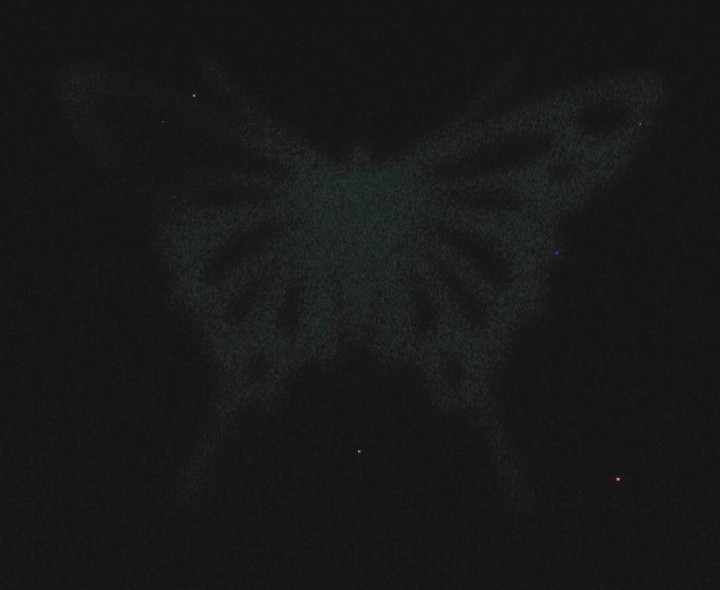(first posted elsewhere on my websites on 12-4-11)
Most glow-in-the-dark toys glow green due to zinc sulfide doped with elements such as copper. In about 1998, I was playing with a red laser pointer and some powdered doped zinc sulfide phosphor and found that the red laser cannot stimulate the phosphor to glow. The red light did not have enough energy to promote the phosphor electrons to the excited state. However, when the phosphor was already excited and glowing green and then was irradiated with the red laser the phosphor briefly glowed more brightly, and then darkened. I could use the red laser to draw lines of darkeness on the glowing doped zinc sulfide. I have found over the years that this stimulated emission and darkening phenomenon works using red light on other glow-in-the-dark objects, including glowing drawing screens sold by toy companies or the glowing screens at museums that record people's shadows from a light flash. I think this ability to use light to draw dark areas or lines on glowing objects could be used to enhance the utility/enjoyment of these materials. I would like to know more details about the mechanisms behind this phenomenon and welcome any insights that you might have.



ABOVE: A glow-in-the-dark butterfly shape gives a butterfly-shaped glow (LEFT), but when irradiated with a red laser pointer on the middle the glow is darkened (MIDDLE) or irradiated with a red laser pointer on the left wing the glow is darkened (RIGHT). Sorry the pictures are so faint - the glow was difficult to capture with my camera and you might have to adjust the angle of your viewing screen.



No comments:
Post a Comment